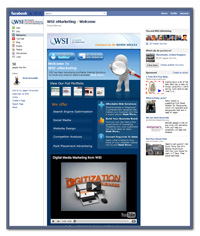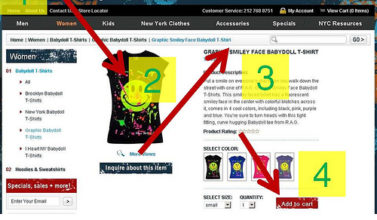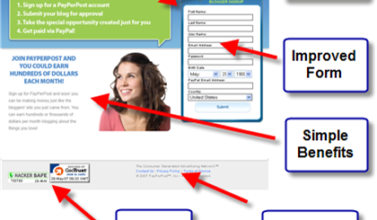
Most business people will acknowledge that Social Media is a necessity at a personal and brand level. Many will also agree that quality content and good reputation management are essential regardless of business type. Considering that a B2B audience consume content differently than the average consumer, how do you market your brand properly and to the right audience?
If you only follow the habits and trends of the average consumer, your B2B content marketing strategy will fail. For businesses operating as B2B and B2C, market segmentation becomes even more important. In this article we’ll take a look at content marketing and engagement strategies for a B2B audience.
B2B Content Marketing Tips
Content marketers across all business types face a number of challenges on a daily basis. Not only must they regularly generate fresh content, they must ensure that it is top quality, relevant and shareable. It certainly is easier said than done especially if you don’t have the right tools and information at your disposal.
According to a research study from the Content Marketing Institute, most B2B companies feel that their content strategy is still in the early stages. Judging from the data, it is clear that many B2B content marketing strategies need improvement. Here is how you can better engage with your B2B audience.
Create The Right Content
There is compelling evidence suggesting that the most popular business topic in B2B is technology. Looking at the graph below from B2B News Network, 45% of respondents read business content related to technology.
A great way to implement this content strategy is discussing and demonstrating new technological advancements your company has to offer. This relates to new software, hardware or any other equipment that you can offer to match what your audience requirements.
Even if you don’t have new technology to discuss, you should still create industry-relevant content on the subject. Some of the topics could include updates related to your business sector or future cutting-edge advancements. Perhaps you are in the process of developing a new mobile app so don’t wait until the launch to write about it, share the information in advance to get your audience excited.
Why is this important? If your B2B audience is looking for ways to improve their business, they will search for the latest technologies available to them. With the right content marketing strategy and SEO best practice, you could appear higher on search engine results.
Write Compelling Blog Posts
Blogging for business is commonplace and forms the hub of an effective content marketing campaign. And now that technology is the primary focus, how do you go about distributing your blog content?
Most businesses publish blog posts and many of those include case studies, company updates and testimonials. In 2017, more than 409 million people viewed more than 21.1 billion blog pages every month (source: WordPress). Don’t run the risk of falling behind your competitors as B2B marketing is an incredibly competitive industry. Once a customer builds a relationship with another company, it is often very difficult for you to get their attention.
Many B2B customers want to consume content from industry leaders so you should become one. A great place to start is frequently publishing good content to establish credibility and a reputable digital footprint. It will make it much easier for your target audience to engage with your content. Creating quality and useful content on a regular basis also shows your audience that you know what you’re talking about.
Remember, your blog should focus on your industry, your customers and their concerns, not just about your business. The idea is to answer any customer questions they may have through the content they want. If your blog is too sales-focused, people will leave. Here are some helpful tips on the ‘Do’s and Don’ts When Blogging For Business’.
Create Infographics
In today’s modern world, the internet offers a smorgasboard of opportunities. Standing out from the rest has become more challenging and you need to find a way to generate and maintain interest. Social media and websites are top of mind but don’t underestimate the power of a well-designed, informative infographic.
It’s no secret that our brains process images much better and faster than text alone. Not to mention that 90% of information we process is visual content. Adding to the fact that 65% of people are visual learners, you should seriously consider infographics in your content marketing.
Infographics rank highest compared to any other type of content including Podcasts, Newsletters, eBooks and Webinars. In the B2B market, you must create infographics to meet the needs of your target audience. It’s not a standalone feature either as you should incorporate infographics into your social media and blogging strategy. Add your own custom graphics and graphs to really stand out from all the stock photos and generic content.
Make Information Easy To Find
Business content is about providing solutions to your target audience. If they can’t easily find what they are looking for, they will go to your competitors. Generating a competitive edge is how you get ahead in B2B marketing.
The difference between a good and a great website is the ease at which customers can find your solutions. If your business promises to deliver within 48 hours of customers placing an order, make sure the information is clearly visible and easy to locate. Displaying information properly on your website is just the beginning as you should also include sharing on social media.
You also need to offer excellent customer service. Don’t add contact numbers that have changed or claim an email response within an hour if you can’t deliver on that promise. Effective content marketing includes making it easier for people to contact you online whether it’s via the phone, email or in person.
Implement Social Media
While blogging and website design are vital elements, don’t forget about social media. Contrary to what some may believe, social media is not just for B2C customers. Fact is, B2B audiences are also active on a various social networks where they have profiles to promote their own business. The main difference is that B2B customers generally don’t browse randomly and will often search for something specific. With that in mind, see how important it is to have good content that is easy to find?
Social media is a powerful tool for nearly any business but knowing which channel to distribute your content is vital. While Facebook is no slouch and you should absolutely have a business page, LinkedIn, Twitter and YouTube are more popular for consuming B2B content. Your business must incorporate these three channels for a successful campaign.
If your target audience are less active on Facebook for example but Twitter and LinkedIn are heating up, make sure that you focus your efforts on reaching them on those channels. Adding social sharing buttons to your blog will make it easy for your readers to share your content.
Effective Email Communication
Email marketing is still one of the most effective ways to reach your B2B audience. Considering the vast number of emails people receive on a daily basis (at home or the office), your content must stand out to get any attention. If it comes across too ‘spammy’ or ‘salesy’, it will only end up in the trash folder.
Even though B2B consumers receive countless emails, majority still say they prefer to have business communication through email. For that reason, B2B marketers believe that email marketing as the most effective lead generation tactic.
The next step is to build quality email lists and this does not mean buying a lead list. If you target potential B2B consumers directly, you will have a much larger email list. Qualified email addresses are important either way but in B2B it is absolutely essential.
B2B email marketing is not just sending out newsletters and random content, your content strategy requires more refining. You should consider sending personalised, individual messages to your existing and prospective clients instead of using a bulk emailing tool for mass distribution. This may depend on the size of your company but it’s not an impossible task especially if it means additional business.
Final Words Of Wisdom
While we briefly mentioned SEO for blogs, your overall SEO strategy to reach your B2B audience is priority. Many B2B consumers prefer to get to know companies through online business content rather than paid search (PPC). That is why your blogging and social media strategies are so important.
Lastly, you should always optimise your content for mobile. B2B consumers also use mobile devices especially if they’re on the road seeing clients. Only designing for desktop is no longer acceptable and ignore this advice at your own peril. More and more people are either working remotely or flexi-time which means they need access to content on their mobiles or tablets.
It’s so important to know how, when and where your audience consumes data. Once you have a good understanding of where you should distribute your business content, you will be able to improve greatly upon your B2B content marketing strategy.
If you need any assistance with your content marketing including blogs, social media management, web design and even PPC, give us call on 01453 542761 or get in touch through our website.
Related Post
What’s the single...
Adam Vincenzini from Comms Corner recently posted a very good article which I think goes...
- January 25, 2011
- By Rob Thomas
- Blogging
Effective Facebook Marketing...
With over 600 million users, Facebook represents the single most connected platform on...
- March 1, 2011
- By Nadine Thomas
- Latest Online Trends
Top Tips for Product Page...
As the internet evolves and user expectation becomes increasingly sophisticated, creating...
- May 31, 2011
- By Rob Thomas
- e-Commerce
How To Drive Sales With...
Landing pages have long been the primary tool of the web-savvy marketer. Whether the...
- June 12, 2011
- By Nadine Thomas
- e-Commerce
Content Sharing Via Social...
Target marketing to meet your business goals Is your business using social media channels...
- June 15, 2011
- By Nadine Thomas
- Digital Marketing
Brilliant Business Blogging
Blogging has long evolved from just being an ideal platform for enthusiasts and budding...
- August 9, 2011
- By Rob Thomas
- Blogging












Leave a Comments